April is Stress Awareness Month
 If you’re stressed about work, you’re not alone. Job stress is a very common health complaint, ranking above financial troubles and family problems, according to the National Institute of Occupational Safety and Health. According to one study, 25% of workers view their jobs as the number one stressor in their lives. Many experience stress due to heavy workloads, pressure to perform and conflicts with co-workers. This April, celebrate stress awareness month by examining your work habits and taking some of these simple steps to reduce unnecessary stress.
If you’re stressed about work, you’re not alone. Job stress is a very common health complaint, ranking above financial troubles and family problems, according to the National Institute of Occupational Safety and Health. According to one study, 25% of workers view their jobs as the number one stressor in their lives. Many experience stress due to heavy workloads, pressure to perform and conflicts with co-workers. This April, celebrate stress awareness month by examining your work habits and taking some of these simple steps to reduce unnecessary stress.
STRESS MANAGEMENT
Some stress is manageable and can actually help us perform better. However, excessive stress can contribute to insomnia, anxiety, headache, depression, short temper, and stomach and back problems. These symptoms can eventually lead to more serious problems, so try the following tips to help keep your workplace stress under control:
- Set realistic deadlines and plan ahead
- Break larger tasks into smaller, manageable steps
- Keep the end goal in mind. Remember what your income allows you to do (to remodel the basement? to send your kids to college? to go on a vacation to Europe?), and set financial goals that you can track
- Focus on what you can do today, not what you failed to do yesterday or what you have to do tomorrow
- Find new ways to do tasks that you dread. Try to make your work more interesting and more efficient
- Clean up your workspace. Clearing away the clutter can clear your mind and reduce distractions
- Use all available resources to assist you
- Take periodic breaks; you’ll be refreshed and more productive when you resume your work
- Debrief from the day: talk about how you’re feeling and possible stress-relieving techniques with someone close to you
TAKING SHORTCUTS IS A BAD IDEA AT WORK
If you are in the habit of taking safety shortcuts at work, it’s time to stop. The potential dangers you expose yourself and others to while taking shortcuts can be deadly.
The following rules are some of your best safety tools for avoiding accidents in the workplace.
- Don’t rush. Work at a steady pace to reduce the likelihood of accidents and mistakes
- Do not take an unsafe entrance or exit into a jobsite or work area; it may pose unseen hazards.
- Wear the proper personal protective equipment.
- Use the right tools for the job, such as scaffolds for work in high areas or the appropriate power tool.
- Instead of straining to reach, get a ladder when something is high overhead.
- Using the buddy system to move an awkward load will help save your back.
- Be aware of your surroundings at all times, especially when moving a load.
- Always maintain a safety-first attitude and alert your supervisor if you witness unsafe practices.
FIVE GREAT STRESS AWARENESS MONTH RESOURCES
- American Institute of Stress: http://www.stress.org/workplace-stress/
- NIOSH Workplace Stress Report: http://www.cdc.gov/niosh/docs/99-101/
- Forbes’ 12 Ways to Eliminate Stress at Work: http://www.forbes.com/sites/jennagoudreau/2013/03/20/12-ways-to-eliminate-stress-at-work/
- Business Balls Stress Management page: http://www.businessballs.com/stressmanagement.htm
- Huffington Post’s Sustainable Stress Solutions: http://www.huffingtonpost.com/lesia-m-ruglass/workplace-stress-sustaina_b_6077434.html
